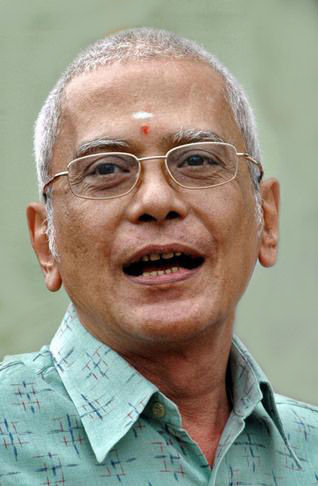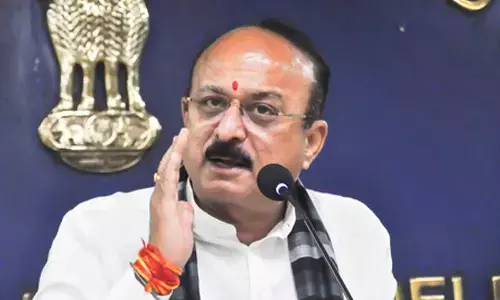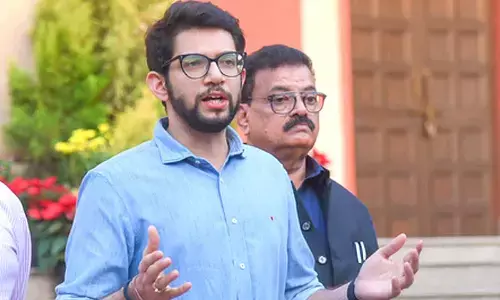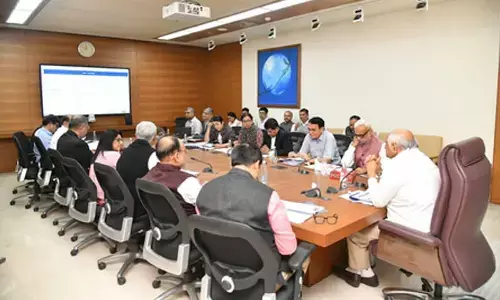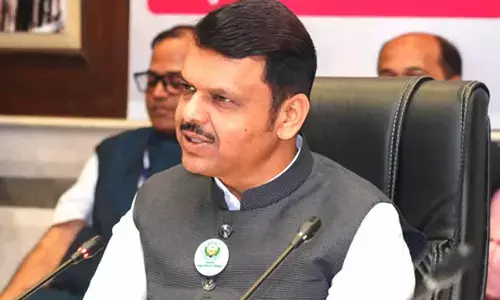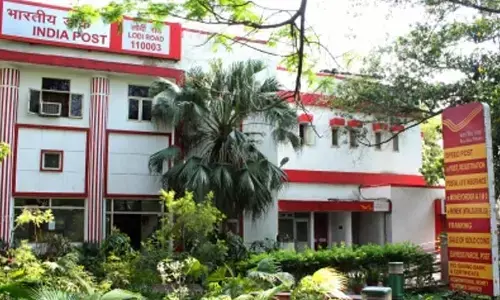Innovation needs bigger encouragement
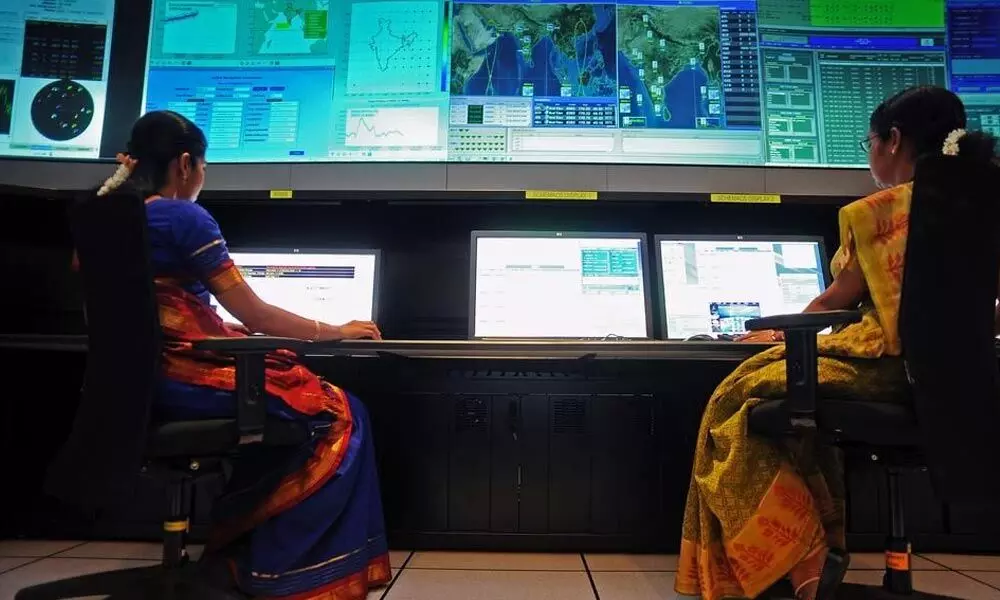
Innovation needs bigger encouragement
Pushing back the frontiers of scientific and technological knowledge has for long been a passionate endeavour for humanity
Pushing back the frontiers of scientific and technological knowledge has for long been a passionate endeavour for humanity. Scientific research, however, has, over the ages, flourished largely on the support and assistance received from the rulers of the day. Patronising cutting-edge research, and advancing the cause of making inventions and discoveries, have fortunately always remained high on the agenda of reigning regimes and those at the helm of affairs of governments.
The Modi government is continuing the tradition of according high priority to the field of Science and Technology (S&T), an approach instituted by Jawaharlal Nehru, and followed by every other Prime Minister since then.
From the days of Aryabhatta, Dhanvantari and Varāhamihira, through the times when brilliant scientists such like C V Raman, Hargobind Singh Khurana, (both Nobel laureates), J C Bose, Homi J Bhabha and Subrahmanyan Chandrasekhar who did the country proud, to our own times, in which we have seen the likes of Venkatraman Ramakrishnan and Abdul Kalam make India's flag fly high in the international brotherhood of scientists. India has always been a country that contributes great minds whose work advance the cause of the growth and development of the human race as a whole.
Research and Development (R&D), has been accorded the pride of place in the budgets presented by governments from time to time, both the Central and the State levels, especially in the areas of S&T, agriculture, industry and economics.
It is a reflection of the priority and importance accorded to S&T and, in particular, the needs of R&D that the Council of Scientific and Industrial research (CSIR) is headed by none less than the Prime Minister himself, and there is also in place an Advisory Committee on S&T to the Prime Minister comprising eminent practising scientists and researchers.
It is with generous support from the Central and the State governments that Centres of Excellence such as the Indian Institute of Science, Bangalore, and Indian Institutes of Technology in various parts of the country, have come up.
There are two aspects to R&D which deserve close examination. One is the amount of energy, effort and support the field is receiving from the governments, the corporate sector, the scientific community, academic institutions. And the other is the extent to which the fruits of research are finding productive application in the development and growth of the nation, in a sustainable and equitable manner.
As a person acquainted with issues related to the agriculture and allied sectors, I am able to state that the extent to which research findings have translated into field level results has been far from satisfactory. I was in Israel about a quarter of a century ago where I found that over 85% of the research conducted by the Agricultural Research Organization (ARO), the premier agricultural research institution of that country, was driven by the demands made by farmers, and the funds provided by them. I doubt that it would be an exaggeration if I stated that even the remaining 15% or so is yet to be solution oriented and demand driven in our country. That, however, is another story.
India's spend on R&D, which stands at about .9% of the GDP, is well below that of major nations such as the US, China, Israel and Korea. There was, in fact, a time when brilliant persons such as Dr C R Rao and Ramanujan had to opt for offshore study for lack of remunerative employment in India. This is in spite of the fact that, measured in terms of Gross Expenditure on R&D (GERD), it has more than tripled in the previous decade and more. The country's aim should be to reach the desired level of 2% in as short a time as possible.
Indians are undoubtedly experts at what Swetha Murali, in her article "Research and Development in India – an Overview", identifies as 'Jugaad' which in HIndi, means the ability of solving a problem, with limited resources, but in an innovative manner (a word with such a well-known meaning that even the Oxford dictionary has officially accepted as a part of its lexicon!). That does not, however, take away from the fact, that R&D requires greater support. Murali goes further to offer the fact of the doubling of patent filings by Indians in the previous decade, as evidence of that phenomenon. The country's abundant resources of skill and education provide fertile ground for cerebral research, which can help encash opportunities available, across a range of sectors, for innovation to bring in rich dividends.
While that, by itself, is hardly a reassuring situation, more disturbing is the fact that private investments in R&D have severely lagged behind those made by the public agencies, quite contrary to the situation that obtains in other countries. The country consoled itself with their achievements elsewhere. The need to provide adequate allocations to the sector has also yet to catch the attention of the state governments. While R&D, no doubt, is not an area that promises attractive returns on investment and, therefore, carries with it a certain amount of risk, it remains crucial for corporates to acquire larger shares of the market in the future.
Governments, both the Central and the States, need to realise that R&D expenditure impacts positively the Total Factor Productivity (TFR) or increasing output per worker. It also offers an opportunity to scientists, especially researchers, to explore the possibilities of developing new knowledge, techniques and technologies. Which, in turn, can spur production and productivity. R&D is also known to be effective in reducing costs, improving quality, diminishing risks, responding to market signals and speeding up production processes.
That is another reason why countries should create a policy environment that supports innovation, which is at the heart of R&D and drives economic growth. Other measures, such as speeding up patent application interview processes and providing grants to industries to develop their own R&D divisions are also necessary. It is, in addition, known that investments in R&D positively impact on the growth of GDP.
Well-directed R&D can also provide the right ambience for innovation. In this endeavour, however, care must be taken to identify what is real innovation, which is content-oriented, while improvements are process–oriented. Inspiration for innovation usually stems from many factors which include the need for change, how that change is perceived and an enabling environment that encourages effort. Real innovation is also a function of passion, pressure and circumstances, and requires determination and perseverance. It has, in fact, been observed that globalisation itself was a product of innovation.
(To be continued on next Thursday)
(The writer is former Chief Secretary, Government of Andhra Pradesh)

